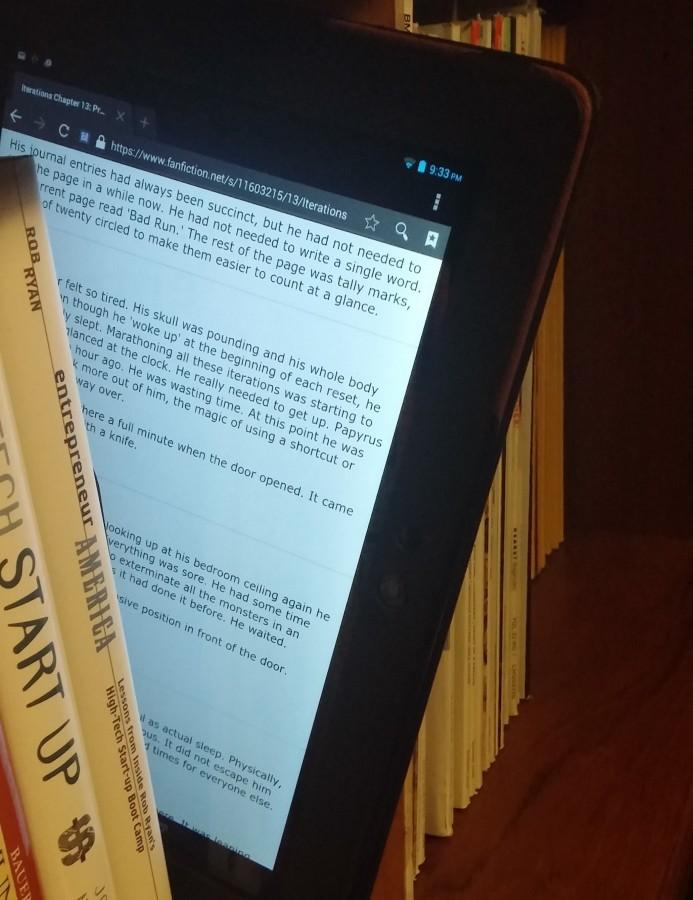A small weight rests on your lap. You hear the crisp sound of the page turning, and your eyes skim the curved words.
Reading a book is commonly associated with this image.
But now when it comes to reading, we imagine words flat and two-dimensional on a illuminated electronic screen with fingers tapping and swiping silently. Gone is the comforting smell of paper and ink or the appealing sound of turning pages.
Many young people welcome this shift, as they have grown up along a world of evolving technology. It is only natural that these people would believe that other activities should be extended to electronics.
However, there is a reason that Barnes and Noble haven’t run out of business like Blockbusters. That reason being that the shift from traditional reading sources to electronic ones isn’t as good as some people might believe.
In a study by Stavanger University, it was found that people can process information better from paper than from a screen. Also, those who used paper sources were much more immersed in their reading than electronic users, showing that the difference had to do with how the brain perceived the two mediums.
A book is a real object and the actions one takes while reading one allows for a better connection between the reader and the words.
Print is also much more preferable due to the negative health effects electronic devices have on people.
According to Harvard Medical School, exposure to the blue light that comes from electronic screens is bad for one’s health and prevents one from falling asleep easily. The blue light causes the body to assume that it is daytime and that one needs to stay active. This is a negative side effect as many people read in the later hours of the day, which causes it to be harder to fall asleep after staring at a a screen.
Real words on paper just naturally have more appeal to people and remain strong even with today’s rapidly evolving technology.


